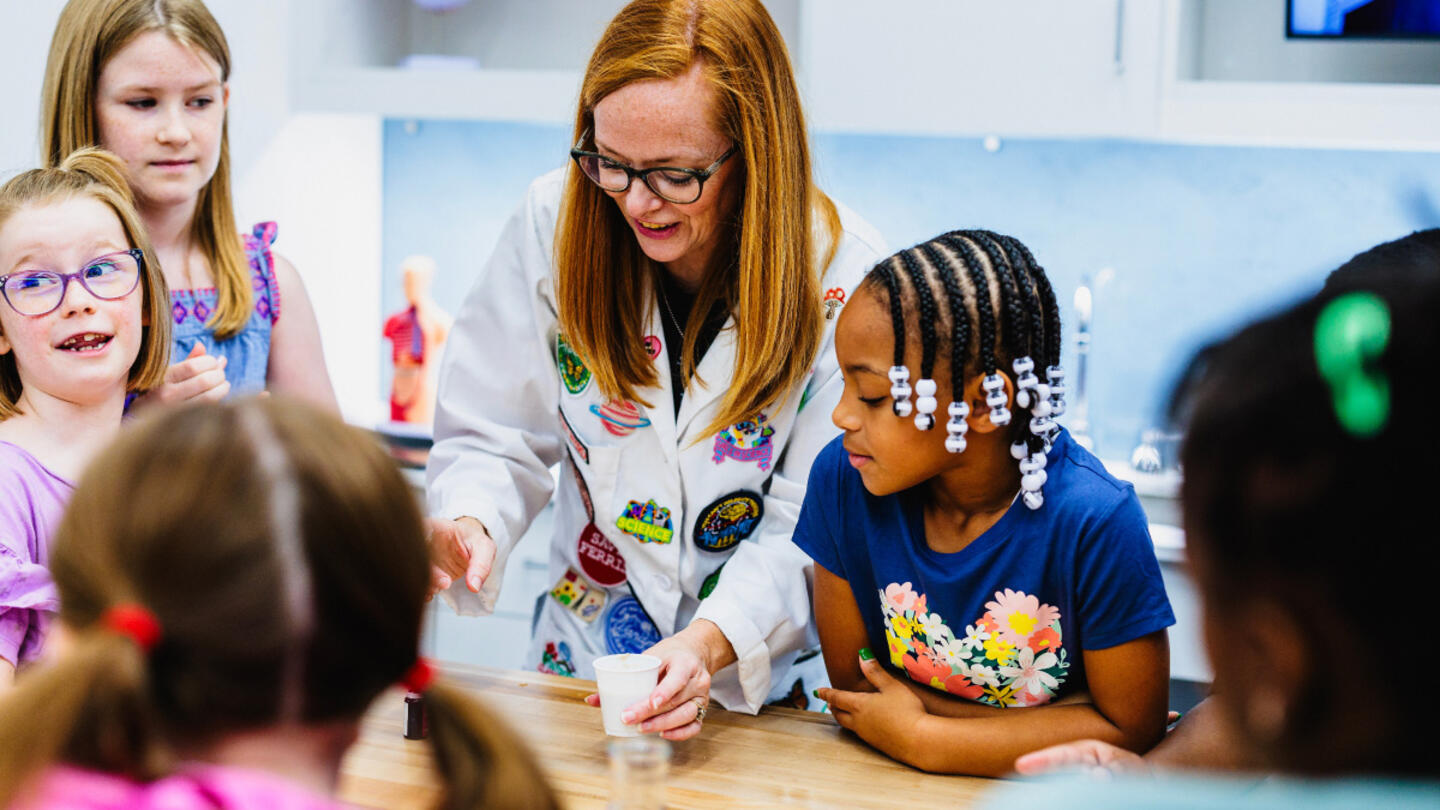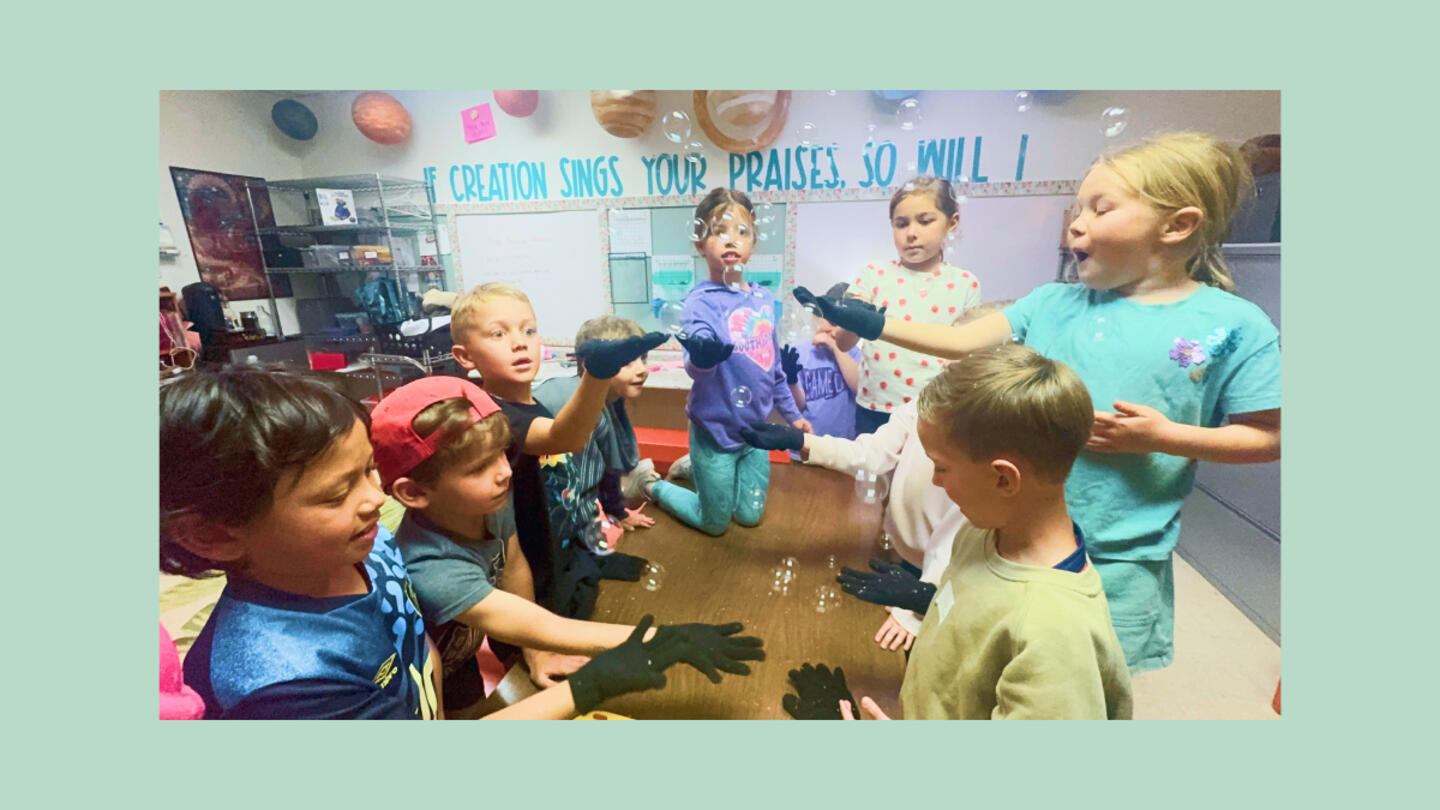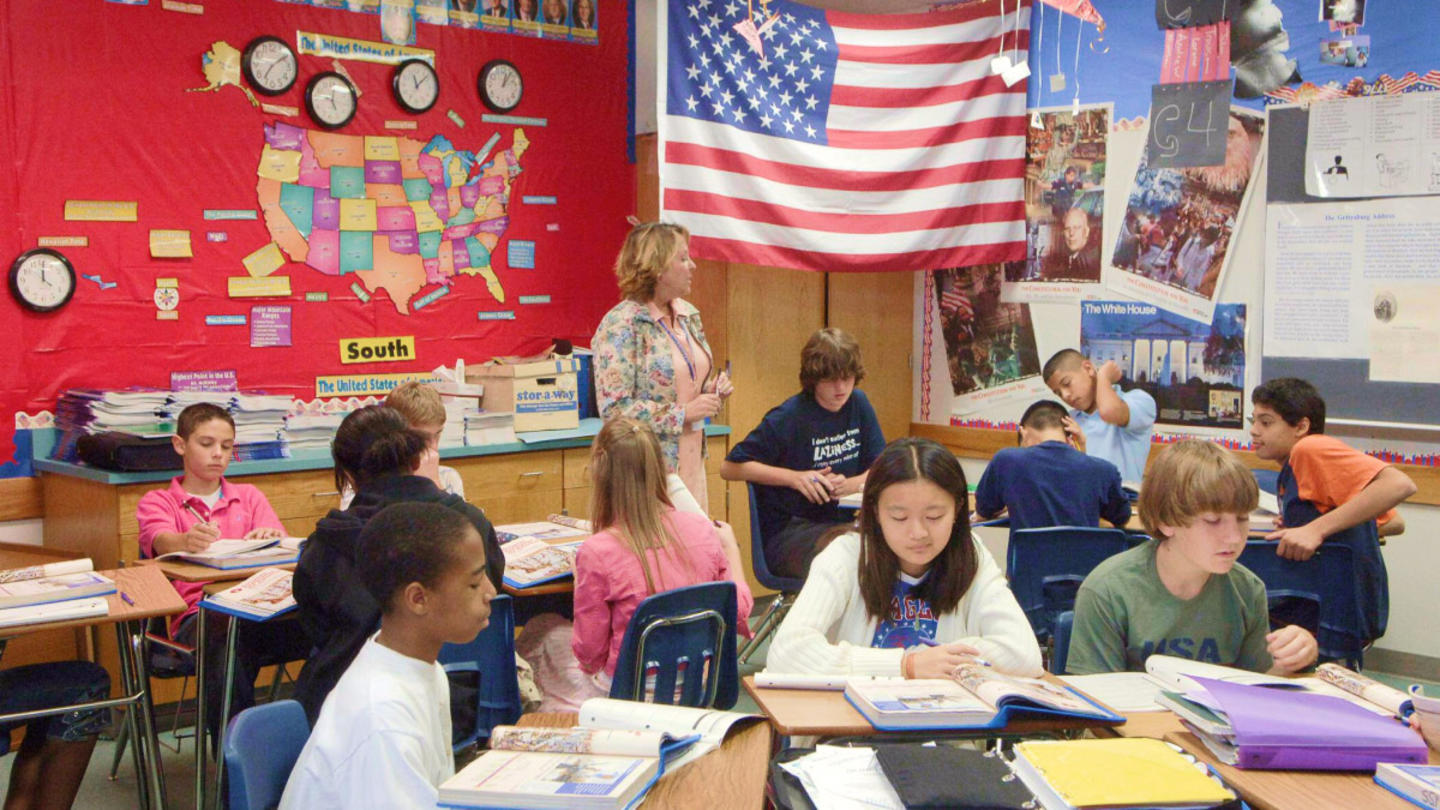For decades, Americans have received the same education as their parents and their parents’ parents. That’s not a good thing.
It’s no secret that the U.S. education system is facing numerous challenges. The standardized, one-size-fits-all approach focuses on memorization and rote learning styles, often failing to cater to the unique needs and talents of individual students. This lack of personalization can lead to disengagement and poor outcomes, leaving students feeling unmotivated and unprepared for life outside of school.
Consider the following statistics from American Enterprise Institute:
-
Two-thirds of students are disengaged by the 12th grade.
- Despite a 150% increase in per-student spending since 1970, there has been no improvement in K-12 outcomes.
- Only 46% of college graduates feel prepared for the workforce.
- Student loan debt amounts to $1.5 trillion, with an additional $90 billion added yearly.
Academic achievement among American students continues to fall behind their global counterparts: According to the Organization for Economic Cooperation and Development, U.S. students rank 28 out of 37 across international countries in math proficiency and similarly low in reading and science.
But what if we’re measuring the wrong things? What if education shifted to focus less on scores and metrics, and more on empowerment and individuality?
Many enterprising educators across the country are experimenting with innovations that meet learners’ different strengths, abilities, and learning styles. Their flexible, student-led models are empowering students, families, and teachers alike — and showing all of us what’s possible.
“Generally, Americans do not care if all students study the same thing compared to them getting to choose courses based on their individual interests,” reported the Purpose of Education Index from Populace, which publishes research on evolving attitudes toward education. “Data clearly illustrates that individualized and tailored approaches that recognize students’ unique needs are preferred.”
The education landscape needs to be revitalized. A paradigm shift from one-size-fits-all education to something more individualized is in order, one that employs the many new styles that are being debuted successfully. Everything from personalized learning to student-directed curriculum to comprehensive teacher training can be the key ingredients to enhance the quality of education in the United States.
“The American public wants ‘different,’ not just ‘better’ from education,” said Todd Rose, CEO of the think tank Populace, which published the index. "It's pretty clear that there's a different set of outcomes that they are expecting."
Clearly, we need to rethink and reform the K-12 American education system. Below are seven ways we can do so.
1. Move toward individualized education
The current education system often treats all students the same, ignoring the fact that each learner is unique. This approach is not only ineffective, but also detrimental to students, educators, and society as a whole.
A truly effective education system should be tailored to meet the unique needs and potential of each student. This means breaking away from the traditional, top-down approach and moving toward a more personalized, learner-centered model of education.
Though achieving this individualized model of education is admittedly more difficult than creating a simple, one-size model, the benefits are more than worthwhile.
As more educators start to explore student-centered options, new tools are emerging to help them get there. For instance, Khan Academy founder Sal Khan has debuted Khanmigo, a Chat GPT-like AI tool that acts as a personalized tutor for students. When teachers don’t have the ability to spend one-on-one time helping students with specific struggles and questions, Khanmigo can pick up the slack. Additionally, the tool serves as an assistant for teachers, completing more administrative tasks and freeing them up to focus on instruction.
At Bloom Academy, each student sets their own goals and pursues a curriculum around them. These not only center around what students hope to get out of education — and life in general — but also offer opportunities for whatever learning styles match their strengths best. Students choose from a variety of hands-on workshops.
In a typical school setting, “creativity and excitement isn’t there anymore, and it should be,” said co-founder Sarah Tavernetti. “I came [up] with this idea that, ‘OK, I’m going to implement more choice, more freedom.’ … They will learn what they need to [learn] when it’s relevant to them, when it’s important to them.”
The result? Students who are excited about learning and empowered to design their own education.
2. Draw upon the power of partnerships in education reform
For many families, education is a choice between opposites: public or private, individual or group, project-based learning or traditional instruction.
But what if we didn’t have to choose?
Educators and families are exploring ways that different education models can pair together to serve each student’s unique needs. By mixing and matching styles, educators can design educational experiences tailored to their students’ individual goals, strengths, and interests.
For instance, at Farmhouse Phonics, Jessica Ramsay provides one-on-one linguistic instruction to students, often using game-based learning. But her instruction isn’t meant to replace the students’ main mode of education. Instead, it complements and bolsters it. One of the best parts of Ramsay’s model is that it is flexible enough to adapt and pair with virtually any other learning style.
Ramsay compared her role to that of a personal trainer. “If you’re a softball player and you hire a coach — in that [same] way, I can work with anyone, of any age, and I meet the reader where they are,” she said.
This collaborative approach is breaking the mold of the traditional education system. Stand Together’s partners are working in public schools, private schools, trade schools, and experimental learning models. By pairing different models, educators of all kinds can work together to strengthen the learning landscape for everyone.
3. Empower families through nontraditional education models
A key aspect of improving the quality of education in the United States is empowering families to choose the best learning options for their children — even if those options aren’t entirely familiar to them. Organizations such as Love Your School are playing a pivotal role in this process by providing expert advice and advocacy to parents navigating the education system.
“We really pride ourselves in providing expert advice and advocacy to parents,” said founder Jenny Clark. “That means that a lot of parents are calling us and saying, ‘Hey, our kid is struggling, and I don’t even know where to start.’ We’re able to walk them through that process, listen to their story, and provide personalized support, which I think is necessary and lacking in the school choice world.”
Through their “Parent-Concierge” service, Love Your School offers personalized support to families, helping them identify the best education options for their children. These can include tuition tax credits, empowerment scholarships, open enrollment programs, microschools, homeschooling, and many other options, depending on each family’s unique situation.
“We really focus on the fact that we support all school options, so public school, private school, homeschool, ESAs,” said Clark. “We just want families to know what their choices are.”
Sign up for Stand Together's K-12 newsletter and get stories, ideas, and advice from changemakers who are transforming education across the country.
4. Embrace self-directed learning
Another promising approach to improving the quality of education in the United States is self-directed learning, a model of education that allows students to decide their own education goals, strategies, and needs. The Forest School in Fayettevile, Georgia, is showing educators just how transformative this can be.
At The Forest School, homework, tests, and grades are cast aside in favor of tools that are designed to prepare students for real-world challenges. Students engage in role-playing games, open-ended conversations, new technology, and apprenticeships, all focused on their unique goals and interests. Rather than a top-down curriculum being mandated, students are empowered to explore what is most interesting to them and matches their strengths.
Success is measured by “flourish assessments” where students gauge their feelings of confidence, independence, and critical thinking. Founder Tyler Thigpen believes that this is a far more meaningful way of measuring impact than how well a student scores on an exam.
“School has been set up and designed to quiet and, in some cases, even shut down the chance for young people to identify, express, and develop their own thoughts, feelings, and plans,” Thigpen said.
By allowing students to sit in the driver’s seat of their own education, The Forest School isn’t just helping them become more engaged and focused in the classroom. It’s allowing them to discover their unique talents and gifts and start using them to contribute to the world around them as they grow.
5. Train paraprofessionals to create a more sustainable teacher pipeline
Students weren’t the only ones who found themselves falling behind during COVID-19. Teachers are burned out, and society is suffering as a result.
One way to aid teachers is by helping paraprofessionals, or teacher aides, step up to the job that they’re already working toward. Many paraprofessionals are already contributing to the education landscape meaningfully, but simply haven’t had the right conditions to do so on a bigger scale. By removing financial and training barriers, paraprofessionals can be empowered to pursue their full potential — and teachers can feel supported as well.
“Over a million people want to become teachers and are working every day in classrooms as paraprofessionals,” said Dr. Mallory Dwinal-Palisch, founder and chancellor of Reach University. “They can’t become teachers because they cannot afford to earn their college degree.”
Reach University, an online nonprofit institution, is bridging the gap. The university offers an affordable and flexible curriculum that allows paraprofessionals to earn their teaching degrees while working in schools. This apprenticeship model provides a sustainable and replicable pathway for aspiring teachers already embedded inside community schools to enter the profession.
Reach University is making the most of a hugely untapped resource: Paraprofessionals, who already know and care about the schools they work in. They are closest to the problem and have the relationships and institutional knowledge to help.
“There is no way that America is still around in 200 years if we do not take the time now to fix our American education system,” said Dwinal-Palisch. “Apprenticeship degrees hold the potential to change our nursing pipelines, our social worker pipelines. It has the opportunity to make sure that individuals can access any profession that they dream of — and not let money be the thing that gets in the way.”
6. Embrace student-run schools
Another innovative approach to improving the quality of education in the U.S. is the concept of student-run schools. One Stone, a school in Boise, Idaho, is a prime example of this model. At One Stone, there are no teachers, only coaches who guide students in their self-directed learning journeys.
Within the traditional, standardized education model, students “were becoming more and more disengaged, no matter what we were doing or how interesting I thought it was,” said Chad Carlson, director of research and design at One Stone. “They come out of the K-12 experience not really knowing who they are and not really knowing the ‘why’ behind their next steps.”
In contrast, at One Stone, students work side-by-side with education “coaches,” who help them explore different curriculum options and decide which works best for their unique goals, as well as which learning styles suit them. No student is beholden to preset trajectories, and no student’s journey looks the same. They are encouraged to emphasize traditional academics alongside soft skills — including empathy, vulnerability, and goal-setting — and to consider the real-world applications of what they learn.
Self-directed learning can help reduce the monotony that many students experience in traditional schools. By giving students the autonomy to decide what they learn and how they learn it, self-directed learning can foster engagement, motivation, and deep learning. When that happens, young people are put on a path to discovering their passions and gifts and, most importantly, how to share them with their communities.
7. Using success stories to guide each other along the way
All of these models can be powerful at changing students’ trajectories. But to create systemwide change? We need to share our stories.
The impact of these reform efforts can be recognized in the success stories of students who have benefited from individualized education. One notable example is Jenny Clark, a mother whose children struggled in the traditional public school system due to their dyslexia and dysgraphia.
With the help of the Arizona Empowerment Scholarship Account, Clark was able to access a dyslexia-specific curriculum and other learning tools tailored to her children’s needs. This transformational experience inspired Clark to found Love Your School, an organization that helps families discover diverse learning options suited to their children’s unique needs. The organization’s momentum is rooted in parents who share and advocate for the solutions that worked for them.
“We want to know about those choices, we want to make sure parents know about those choices, and we want to connect those new schools and educational entrepreneurs to their customers, which are parents,” said Clark.
Or take Xilo, a student at Bloom Academy. Traditional school wasn’t working for him. The usual ways of learning to read (like flash cards and sight words) weren’t meeting his personal needs and style. It wasn’t until he went to Bloom that he discovered the unique strategy that would unlock reading for him: using music to listen to books and sound out words. Stories like Xilo’s can help other families explore and discover new ways of lifting young students to their full potential.
Through broadcasting successes, other educators, parents, and even lawmakers can be made aware of just how important it is to embrace and support these options, and the movement for education reform can truly pick up speed.
The way forward for education in the U.S.
Transforming the education landscape in the United States first requires a mindset shift regarding the goals of education and what learning can look like. Rather than exclusively defining education with the one-size-fits-all, top-down model, we need to embrace individualized, learner-centered education.
These innovative solutions — from personalized learning to teacher training to student-led models — provide a roadmap for how to improve the quality of education in the United States. It’s time to take action and transform our education system for the better.
“When asked the question ‘Do you love your school?’ we want parents to respond with a resounding yes,” said Clark.
With the right strategies and the collective efforts of educators, policymakers, parents, and students, we can create an education system that truly empowers every learner to thrive — inside the classroom and beyond.
“I could see this being the new norm,” said Yamila De Leon, Bloom Academy’s other co-founder. “If you can be happier and self-actualized, then you can go about life in a beautiful way.”
***
Learn more about Stand Together’s education efforts and explore ways you can partner with us.

‘We want these boys to know that regardless of where they come from, they still can be excellent.’

This colearning space has the potential to bridge the divide between public and private education.

New Johns Hopkins data shows homeschooling’s recent surge has transformed the education landscape.
Step 1: Find the best learning environment for your child. Step 2? Figure out how to pay for it.
